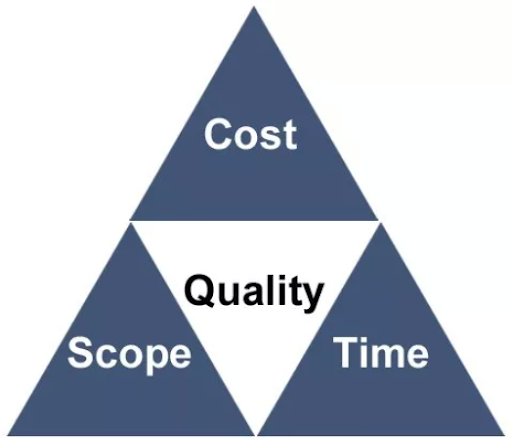Start with yes… But
In the world of project management, the ability to say "Yes" often takes the spotlight. It is associated with positivity, progress, and openness to opportunities. However, hidden within the folds of relentless affirmation lies the underestimated power of "No". Embracing the "No" within a "Yes" environment can change the game, steer projects towards success with focus, efficiency, better risk assessment, a balanced approach, and more transparency for your project.
In the world of project management, the ability to say “Yes” often takes the spotlight. It is associated with positivity, progress, and openness to opportunities. However, hidden within the folds of relentless affirmation (referring to the often misconstrued “Start with Yes” mindset at Zalando) lies the underestimated power of “No”. Embracing the “No” within a “Yes” environment can change the game, steer projects towards success with focus, efficiency, better risk assessment, a balanced approach, and more transparency for your project. At Zalando, is the answer ultimately Yes? It depends.

The Dilemma of Endless Affirmation
Often, project managers find themselves in a sea of endless possibilities, ideas, and requests. Every suggestion can seem plausible and can lead to an overabundance of commitments. Saying “Yes” to grasp the opportunity has to become the default answer, driven by the desire to accommodate stakeholder requests, maintain a positive atmosphere, or simply avoid conflict.
Opportunities are everywhere, despite challenges and difficult market conditions (we all remember the Covid pandemic…). Seizing opportunities is a tricky deal, it can leave us vulnerable to failure if we make the wrong decisions. As Nora Roberts says “If you don't go after what you want, you'll never have it. If you don't ask, the answer is always no. If you don't step forward, you're always in the same place.”. At Zalando, we have our fair share of compliance projects and infrastructure migrations but when it comes to changing the game, creating something new, and taking risks, we [Humans] are innately risk averse and afraid of putting our vulnerability on the line1. This is why one of our most beloved values at Zalando from Our Founding Mindset is Start with Yes. It states “Optimism creates opportunities. We focus more on what can be gained than what can be lost. And while we start with yes, we don’t necessarily end on yes. We separate real priorities from noise.”.
The Pitfalls of Unchecked Affirmations
The incessant “Yes” culture in project management can lead to several pitfalls directly linked to the Project Management triangle:
- Scope Creep: Continuous acceptance of new ideas may lead to ever-expanding project scope, and inevitably missed deadlines and increased costs.
- Resource Drain: Overcommitment from leaders ultimately strains the team’s capabilities, leading to reduced productivity and employee churn.
- Quality Compromise: The nature of teams is to deliver what is asked, and overcommitting compromises the quality of deliverables.

The Art of Saying “No”2 (aka “Yes but”/”No because”)
There is no conversation at Zalando without a choice or decision to make. While I say yes to everything, one of the most difficult parts of my role as a project manager is to consistently challenge decisions to optimize the delivery of the projects and how they are run. “Yes but”/“No because” is about weighing the consequences of our choices and understanding the ramifications of making that decision while making it transparent. It strategically transforms the projects dynamics:
- Clarity in priorities: Saying “Yes but”/“No because” helps in setting clear boundaries and priorities. It enables everyone to focus on the more critical tasks that align directly with the project’s goals.
- Enhanced decision-making: Evaluating and discerning when to say “Yes but”/“No because” encourages thoughtful decision-making. It ensures the choices are in line with project goals rather than driven by instant gratification.
- Respectful communication: Saying “Yes but”/“No because” doesn’t have to be confrontational. We are all part of the same team, following the same company strategy. The discussion is about emphasising or weighing in the reasons behind a decision and proposing alternatives or compromises.
Implementing the “Yes but”/”No because” mindset
The Project Management Institute3 describes a method to handle decisions and choices:
- Be clear from the start and establish the criteria: define clear criteria for evaluating requests or changes against project goals, timelines, and resources (with the help of portfolio managers).
- Explain the consequences and empower communication: encourage open communication, where saying “Yes but”/”No because” is viewed as a constructive contribution rather than a negative assertion.
- Have a contingency plan and avoid surprises: the purpose of the discussion is to make sure to understand the situation as a whole and evaluate all the possibilities and their consequences. It helps to educate stakeholders about the project’s constraints and how to say “Yes but” can benefit the overall success by maintaining focus and quality.
In conclusion, the balance between “Yes” and “No” is crucial. While saying “Yes” keeps the doors open to any opportunity, the “No” acts as a guiding compass to ensure that the project remains focused, efficient, and aligned with the core objectives. Embracing the power of “Yes but”/“No because” is not about rejection but strategic decision-making that ultimately drives everyone’s success.
Notes
Take A Risk: The Odds Are Better Than You Think Forbes Dr Margie Warrell ↩
Content inspired from “The Art of Saying “No” by Jae-Ha Kim ↩
Brox, D. (2012). Say no! PM Network, 26(5), 46–49. ↩



